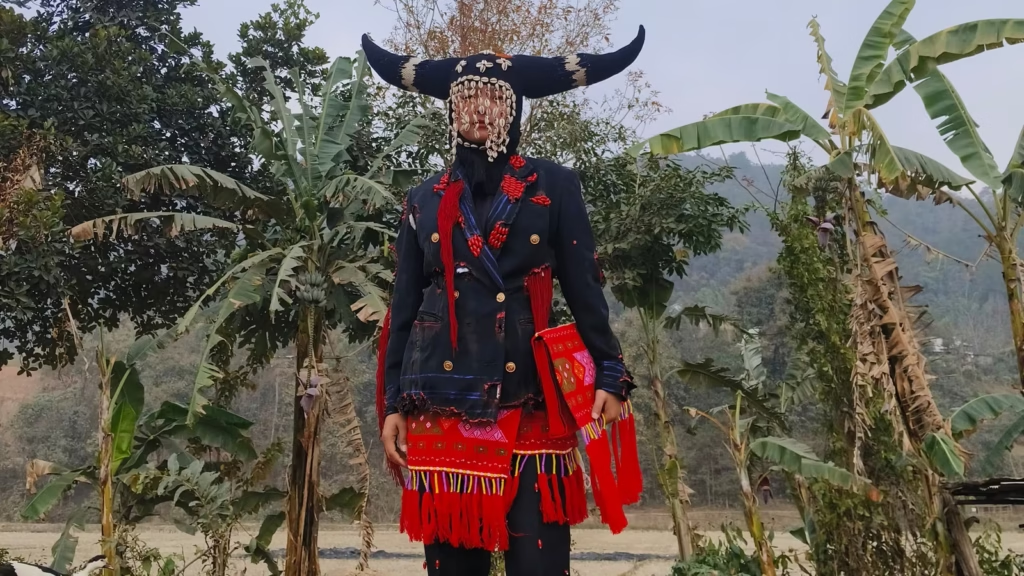
From Grief to Glory: Designer Turns Loss Into Fashion Legacy
Meet the Northeastern Visionary Redefining Fashion Through Personal Struggles
How One Designer Transformed Heartbreak Into Timeless Style
The Untold Journey of a Northeastern Designer Who Rose From Loss
Meet this Northeastern designer who takes inspiration from his personal loss
Life often shapes us in ways we never imagine. For some, loss becomes a weight that drags them down. For others, it becomes a fire that fuels creativity, passion, and purpose. This is the story of a Northeastern designer who turned his deepest personal grief into art that resonates with people far beyond his home state. Mangtinlen Kilong journey is not just about fashion, but about resilience, healing, and the power of channeling emotions into something beautiful.
A childhood rooted in culture
Growing up in the lush valleys and misty hills of Northeast India, he was surrounded by colors, textures, and traditions that shaped his early creative mind. The region, known for its vibrant handlooms and intricate weaving patterns, quietly became the canvas for his imagination. From watching his mother stitch clothes to observing the artistry of local weavers, his understanding of design was born not in classrooms, but in the everyday details of life.
His childhood was simple but filled with strong cultural roots. However, life took a tragic turn when he lost a loved one very dear to him. That loss left a void too big to fill, but it also planted a seed — a seed that would eventually grow into his greatest source of inspiration.
Turning pain into purpose
For many years, he struggled with the silence of grief. He often described it as walking through a room full of people yet feeling completely invisible. It was during this period of numbness that he discovered design not just as a career, but as therapy. Sketching clothes, experimenting with fabric, and playing with textures gave him a sense of control over something when everything else felt uncontrollable.
What made his designs stand out was the emotion stitched into every piece. He often said, “Every line I draw carries a memory, and every fabric I choose holds a story.” His collections were not just clothes — they were stories of loss, resilience, and rebirth.
The rise of a new voice in fashion
When he first presented his designs in local exhibitions, people noticed something different. His work wasn’t just trendy or stylish — it carried depth. The muted tones reflected sorrow, while the bursts of bright colors spoke of hope. His storytelling through design began to attract attention not only from local fashion lovers but also from larger platforms that celebrated originality.
He slowly carved a niche for himself, creating collections that blended modern silhouettes with traditional Northeastern fabrics. Each collection paid tribute to his roots, his personal journey, and the people he lost along the way. His designs became a way to immortalize memories.

Keeping traditions alive through fashion
While the global fashion industry often leans toward fast trends, this designer chose a different path. He worked closely with local weavers and artisans from the Northeast, ensuring that their craft was not just showcased but celebrated. By collaborating with rural communities, he not only uplifted local economies but also preserved cultural heritage.
For him, design was never just about glamour. It was about identity. It was about telling the world that beauty can come from both joy and sorrow. His approach made him a bridge between tradition and modernity, showing how personal stories can shape universal art.
Fashion as healing
What makes his story even more powerful is the way he views fashion. To him, it is not just about clothes; it is about healing. Many people who wore his creations shared how they felt an emotional connection to his work. Some even said his designs made them feel seen and understood.
This connection was no accident. His inspiration came from the very human experience of loss, something almost everyone goes through at some point. By translating grief into fabric, he created something deeply relatable — fashion that touched the heart before it pleased the eye.
Challenges on the journey
The path was never easy. Coming from a region often overlooked in mainstream Indian fashion, he had to fight harder to get noticed. There were financial struggles, skepticism from industry insiders, and moments where he doubted his own worth. Yet, each time he faced rejection, he turned back to the one thing that never failed him — design.
His resilience became his greatest strength. He knew that success built on authenticity would take time, but it would last longer than any trend. And he was right. Slowly, his story and his work began to travel beyond borders, touching lives far from home.
A designer who inspires
Today, his journey serves as an inspiration not only for aspiring designers but for anyone carrying the weight of personal loss. He proves that grief doesn’t always have to destroy — sometimes, it can build. Sometimes, it can teach us to create.
His story is a reminder that creativity often blooms in the darkest corners of life. By embracing his pain and transforming it into beauty, he has given the world more than fashion; he has given it hope.
Looking ahead
As he continues to grow, he dreams of building a global platform that highlights the art of Northeastern weaving and design. He envisions collections that travel the world yet remain deeply rooted in his homeland. For him, the future is not just about expanding his brand but about carrying forward the stories of his people, his roots, and his personal journey.
He believes that fashion should not just be worn but felt. And in every piece he creates, he ensures that there is a heartbeat — a silent reminder that beauty and pain can coexist, and from loss can emerge something extraordinary.
Conclusion
The story of this Northeastern designer is not merely about clothes or trends. It is about the resilience of the human spirit, the healing power of creativity, and the way personal stories can transform into universal art. His journey teaches us that while loss is inevitable, how we respond to it can shape our destiny.
Through his designs, he has turned grief into garments, sorrow into silhouettes, and pain into patterns of hope. He shows us that fashion, at its core, is not just about what we wear, but about the emotions we carry within us.






Leave a comment